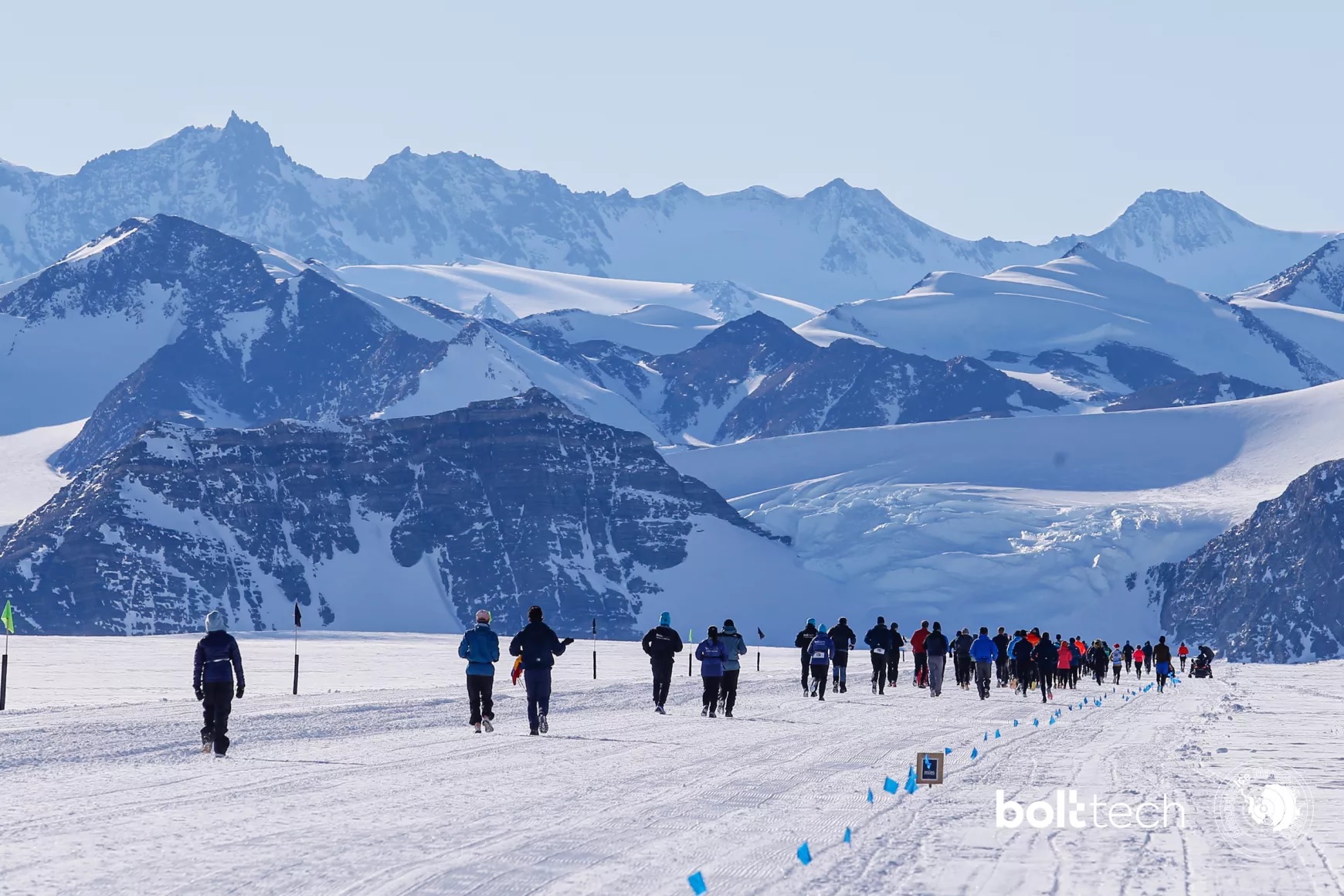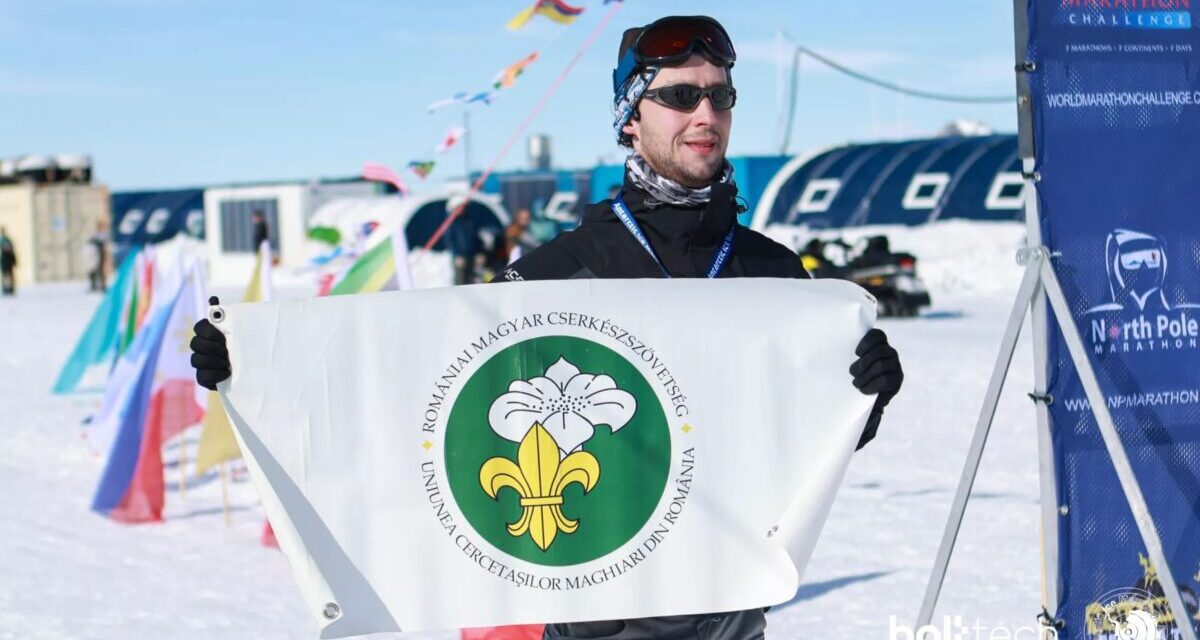Imre Vekov returned a week ago from Antarctica, where he ran a marathon. It is not easy to overcome the 42 kilometers even in temperatures that are common to people from Central Europe, not even minus twenty degrees. Interview.
Imre Vekov didn't start in Antarctica either, he already had a few marathons in his running shoes. He first ran a marathon in 2009, then a mountain, but he also ran in Lisbon, New York, and Rwanda. In addition to running, his other sport is mountain climbing. He began to deal with this more seriously within the scouts, so that they could organize challenging programs for scouts of high school and university age as well. He has also visited Mont Blanc, Kilimanjaro, Elbrus, Aconcagua and the base camp of Mount Everest. He took the flag of the Romanian Hungarian Scout Association to the summits. How far will you push your limits and what is still challenging after an Antarctic marathon? We also talked about this with the technical and innovation business development coordinator who changed Japan to Dallas after four years.
How did you get involved with long-distance running?
As a scout, I was never unfamiliar with hiking and long distances, but I have no athletic background. Perhaps the word hobby runner could be a good way to describe what I do. I started running a bit more during university. I also hiked a lot with the Transylvanian Carpathian Association, I liked the performance hikes, after that I thought in 2009 that if I could walk 42 kilometers, I could also run. I signed up for the Királykö mountain marathon. The first one was completed in eight hours. This was followed by more mountain marathons. When I was living and studying in Portugal, I ran my first traditional marathon, in Lisbon and then in Porto.
What was your goal during the competitions?
The emphasis was primarily on performance. I'm not a fast runner. Maybe I could have improved my time results with more training, but I didn't always find enough training time for that. I usually run 10 km 2-3 times a week. This, supplemented by a few half-marathons, is usually enough for a person to be able to run a marathon. Of course, I was forced to train "properly" before the Antarctic marathon.
Many people run marathons, but few in Antarctica. How did you come up with the idea to start this extreme race?
As a climber, I like snowy and icy terrain. I originally entered the North Pole Marathon, but the organizer canceled this race due to logistical problems. However, the entry could be used for the Antarctic marathon, which is also organized by this company. So I changed my North Pole entry in April to the Antarctic marathon between December 12-14.
How differently should you prepare for an ice-cold marathon than for a classic one?
Obviously, people perform worse in minus ten to twenty degrees than in the positive temperature range, this must be taken into account. One has to start the preparation with the mental attitude that one can complete the competition not only if everything goes well, but also if everything goes worst. That's why I prepared a pretty solid training plan consisting of 3-5 runs per week. During the week, I ran shorter, more intense distances and trained for strength, and on weekends I ran longer distances. I increased this distance to 30 kilometers at the weekend. Before the competition, I reduced the load so that my body could rest and regenerate and give the best possible performance in the competition.
In Dallas, you obviously had all the opportunities for training, except for the freezing weather, because the average temperature in November was around 14 degrees, which cannot be called Antarctic in any way. Did you train in a cryochamber, or how were you able to prepare for what awaits you?
There were some of my fellow competitors who trained on treadmills in refrigerated containers. Their results were even better than mine. I wasn't specifically prepared for this part. I reckoned with him that when it's extremely cold and windy, my performance will drop, I'll run slower, and maybe I won't be able to fully utilize my lung capacity. That's why I trained harder.

Photo: Bolttech
How did you get to the venue of the competition?
I flew from Dallas to Santiago de Chile and then to Punta Arenas. From there they flew me to Antarctica. The landing takes place on a glacier, for which the runway is prepared for weeks and months. The race was around the Union Glacier. Planes from Chile arrive here on a weekly basis.
How many degrees was it?
Now it is summer in Antarctica, the temperature has ranged from -5 to -20 degrees. What reduced the feeling of heat was the strong wind. The organizers also warned us that if we experience frostbite on our fingers or toes, we should stop the race immediately and ask for help, as this can lead to permanent damage.
What clothing should you wear to run in Antarctica?
We arrived on December 12th. We ran a short test lap to get a feel for the conditions and then had a detailed briefing with a meteorologist who told us what temperature, wind and conditions to expect the next day, the day of the race. On the upper body, as in mountain climbing, we count on three layers: one with a body adhesive, whose task is to absorb sweat; with an insulating layer that provides warmth; and with a windproof layer. As far as footwear is concerned, cross-country running shoes are sufficient, so we did not run in boots or any special footwear. But otherwise, when we moved around the camp, we wore special clothing and footwear rented for that time.
The camp was located between mountains, sheltered from the wind. You did the marathon by writing four 10-kilometer laps. How were the weather conditions?
There were sections where the headwind was extremely strong, which forced me, along with several other competitors, to walk. In this case, the person tries to monitor his pulse and breathing. He tries not to switch to panting and to run with relatively little effort. However, in an icy headwind, even a small effort requires enormous energy. Therefore, when I saw that my heart rate was in the range above 180, I preferred to walk in until it normalized. I have experienced that the strongest headwind is in the last third, then its intensity is lower or it blows from behind. I allocated my strength accordingly. In my head, I divided the distance into shorter sections.
Long distances usually reach the bottom. Did you have a low point in this race?
The low point came around 25 kilometers, but I thought, even if a little slower, I will finish this race anyway.
Then it passed at 30 kilometers, and after that I could run properly, so I finished the race cheerfully and in a good mood in 5:49:53, which was enough for 25th place out of 52 male competitors. In both the men's and women's categories, the American competitor finished with a time of 4:01 and 5:04 in the women's category.
I guess you're taking a well-deserved rest now. What challenges await you in 2024.
That's right, I'm regenerating now. I have not yet chosen a specific competition for 2024, but I would really like to be able to take the flag of the Romanian Hungarian Scout Association to the North Pole, so if it is held, I would definitely like to start the North Pole Marathon.
Featured image: Bolttech













